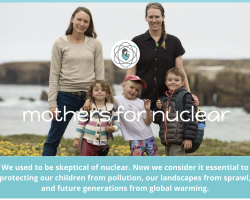Category of Content
Siting Experience Documents Only
Publication Date
Subject Matter
Keywords
Thermodynamic Database for Generic Disposal System Assessment
Thermodynamic Database for Generic Disposal System Assessment
Modeling Coupled THM Processes and Brine Migration in Salt at High Temperatures
Modeling Coupled THM Processes and Brine Migration in Salt at High Temperatures
Thermo-Hydrological and Chemical (THC) Modeling to Support Field Test Design
Thermo-Hydrological and Chemical (THC) Modeling to Support Field Test Design
Fluid Flow Modeling in Representative Media
Fluid Flow Modeling in Representative Media
Report on THMC Modeling of the Near Field Evolution of a Generic Clay Repository: Model Validation and Demonstration
Report on THMC Modeling of the Near Field Evolution of a Generic Clay Repository: Model Validation and Demonstration
SNF Modeling and Testing - LANL (FY21)
SNF Modeling and Testing - LANL (FY21)
Multiphysics Simulation of DPC Criticality Scoping Calculations and Coupling Strategy
Multiphysics Simulation of DPC Criticality Scoping Calculations and Coupling Strategy
Contribution to L2 Milestone: SNL Overall Control Account
Contribution to L2 Milestone: SNL Overall Control Account
Preliminary Evaluation of Removing Used Nuclear Fuel From Nine Shutdown Sites
Preliminary Evaluation of Removing Used Nuclear Fuel From Nine Shutdown Sites
Fluid Flow Model Development for Representative Geologic Media
Fluid Flow Model Development for Representative Geologic Media
Sequestration of radioactive iodine in silver-palladium phases incommercial spent nuclear fuel
Sequestration of radioactive iodine in silver-palladium phases incommercial spent nuclear fuel
Report on Hydrologic Flow in LowPermeability Media
Report on Hydrologic Flow in LowPermeability Media
Thermodynamic Properties of Brines, Minerals and Corrosion Products
Thermodynamic Properties of Brines, Minerals and Corrosion Products
A Comprehensive Monte Carlo Sampling Uncertainty Quantification Methodology for Used Nuclear Fuel
A Comprehensive Monte Carlo Sampling Uncertainty Quantification Methodology for Used Nuclear Fuel
Categorization of Used Nuclear Fuel
Categorization of Used Nuclear Fuel
Experimental Results for SimFuels
Experimental Results for SimFuels
Passive Atmospheric Monitoring in a Vadose Zone Underground Research Laboratory
Passive Atmospheric Monitoring in a Vadose Zone Underground Research Laboratory
LANL Activities in Model Benchmarking and Thermal Test Design Calculations
LANL Activities in Model Benchmarking and Thermal Test Design Calculations
Concepts for Small-Scale Testing of Used Nuclear Fuel
Concepts for Small-Scale Testing of Used Nuclear Fuel
Online Waste Library (OWL) and Waste Forms Characteristics Annual Report
Online Waste Library (OWL) and Waste Forms Characteristics Annual Report
TEST PLAN TO DEVELOP HYDROLOGIC LABORATORY METHODS: EXPERIMENTS OF BRINE MIGRATION IN SALT DUE TO THERMAL GRADIENT AND /OR DEHYDRATION OF SECONDARY MINERAL PHASES
TEST PLAN TO DEVELOP HYDROLOGIC LABORATORY METHODS: EXPERIMENTS OF BRINE MIGRATION IN SALT DUE TO THERMAL GRADIENT AND /OR DEHYDRATION OF SECONDARY MINERAL PHASES
Mothers for Nuclear Flyer
Mothers for Nuclear Flyer
Mothers for Nuclear Informational Flyer
Guidance for Creating a Community Benefits Plan for Regional Direct Air Capture Hubs
Guidance for Creating a Community Benefits Plan for Regional Direct Air Capture Hubs
This document is intended to provide supplemental information to assist applicants developing a Community Benefits Plan (CBP) for the Regional Direct Air Capture Hubs. As shown in the graphic to the right, Community Benefits Plans are based on a set of four core interdependent policy priorities: engaging communities and labor; investing in America's workforce; advancing diversity, equity, inclusion, and accessibility; and implementing Justice40.
Socio-technical multi-criteria evaluation of long-term spent nuclear fuel management strategies: A framework and method
Socio-technical multi-criteria evaluation of long-term spent nuclear fuel management strategies: A framework and method
In the absence of a federal geologic repository or consolidated, interim storage in the United States, commercial spent fuel will remain stranded at some 75 sites across the country. Currently, these include 18 “orphaned sites” where spent fuel has been left at decommissioned reactor sites.

